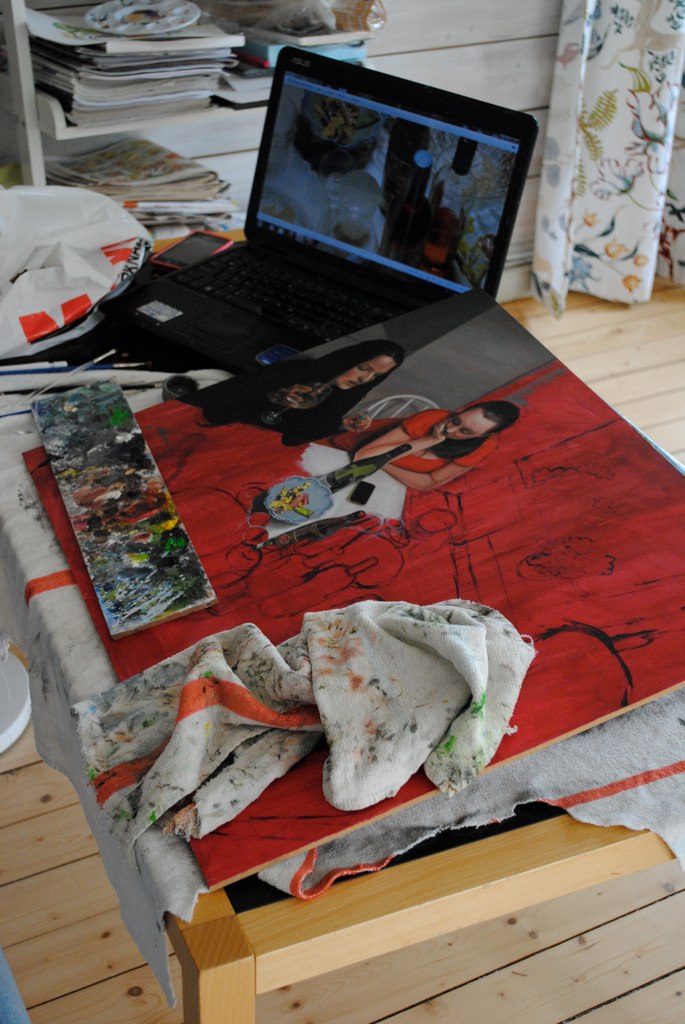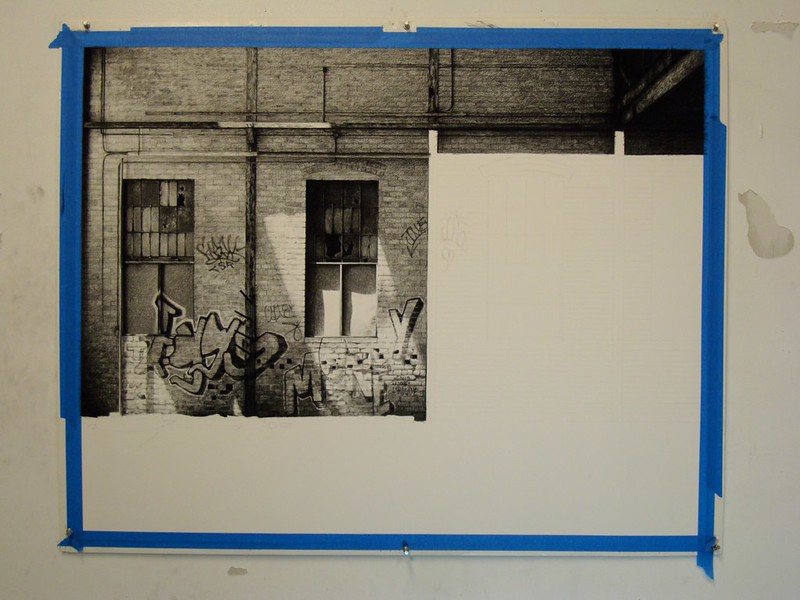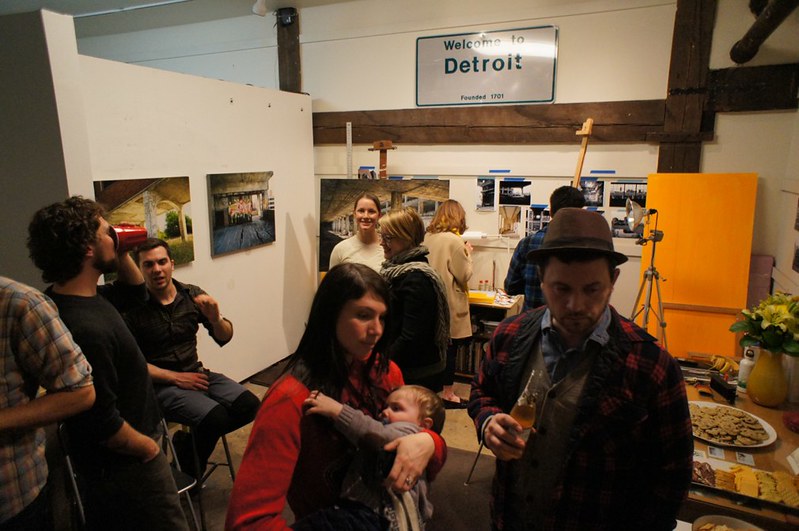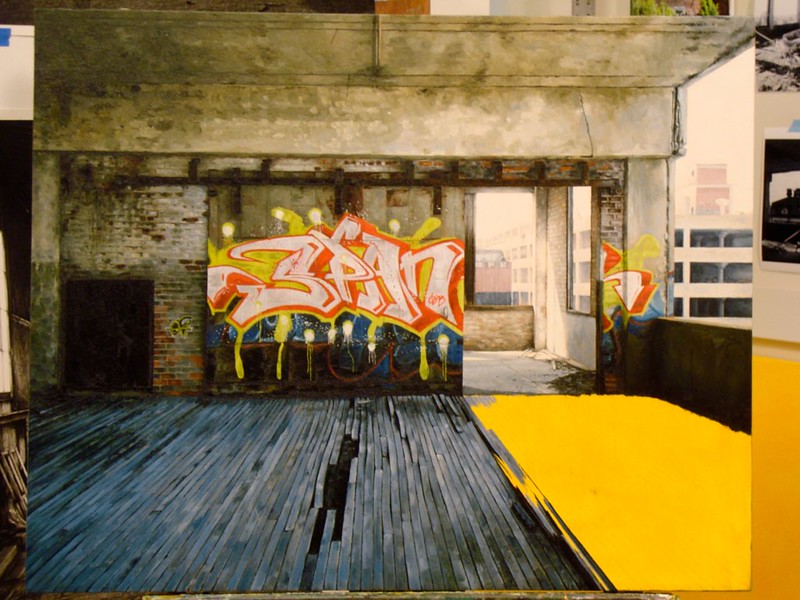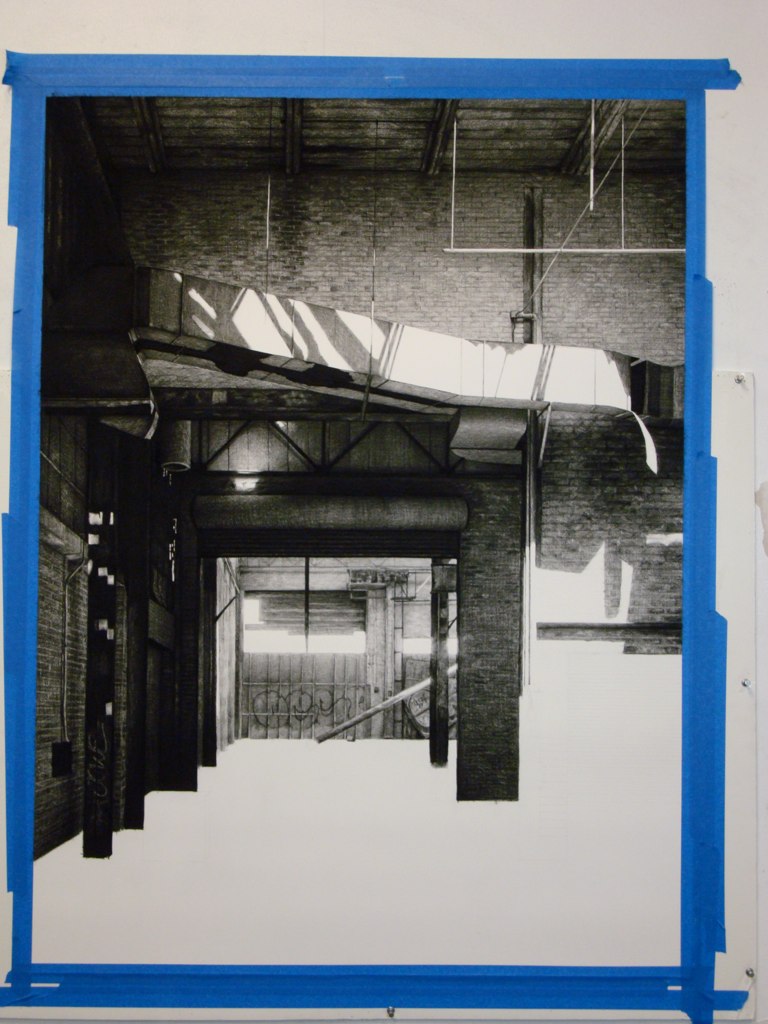Post by thinkspace on Feb 17, 2013 11:59:13 GMT -8
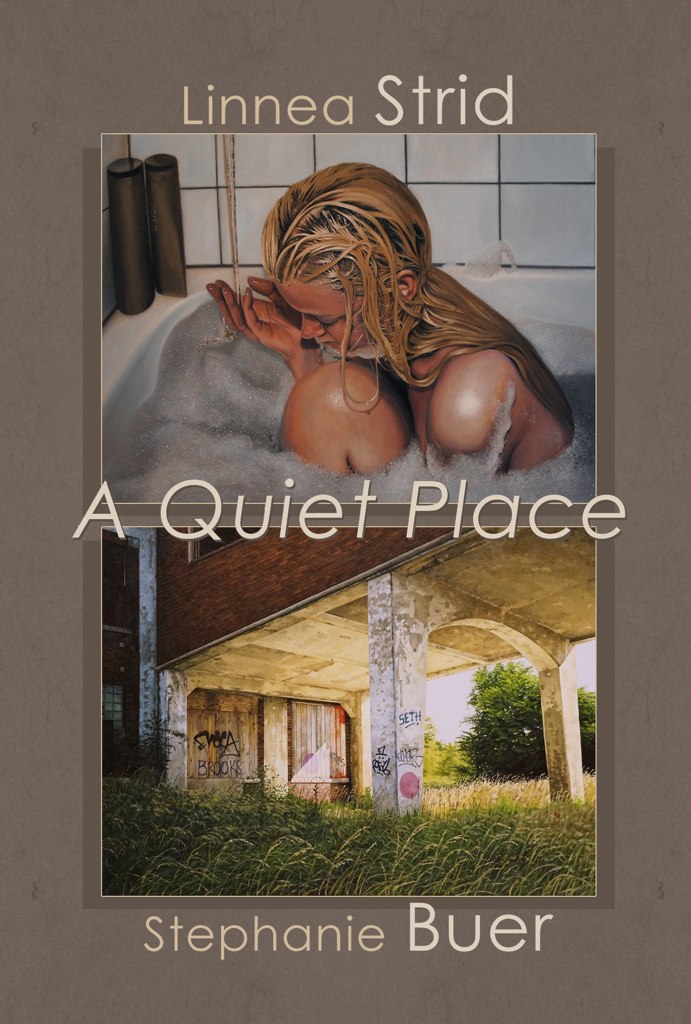
'A Quiet Place'
New oil paintings from Linnea Strid alongside new oil paintings and charcoal on paper works from Stephanie Buer
Opening Reception:
Sat, March 2nd 6-9PM
On view March 2nd - March 23rd
Take a look inside both artist's studios here:
thinkspacegallery.com/shows/2013-03/#photos
Thinkspace is pleased to present A Quiet Place, featuring new works by Stephanie Buer and Linnea Strid. Both painters explore the solitudes that define their respective creative practices and subjects. Whether it be the desolation of forgotten urban spaces taking on ghostly traces and pregnant absences, as in Buer’s work, or the personal isolation of the artist and the anxiety of hyper-awareness, as in Strid’s - both artists delve into the recesses of poetic silence and separateness.
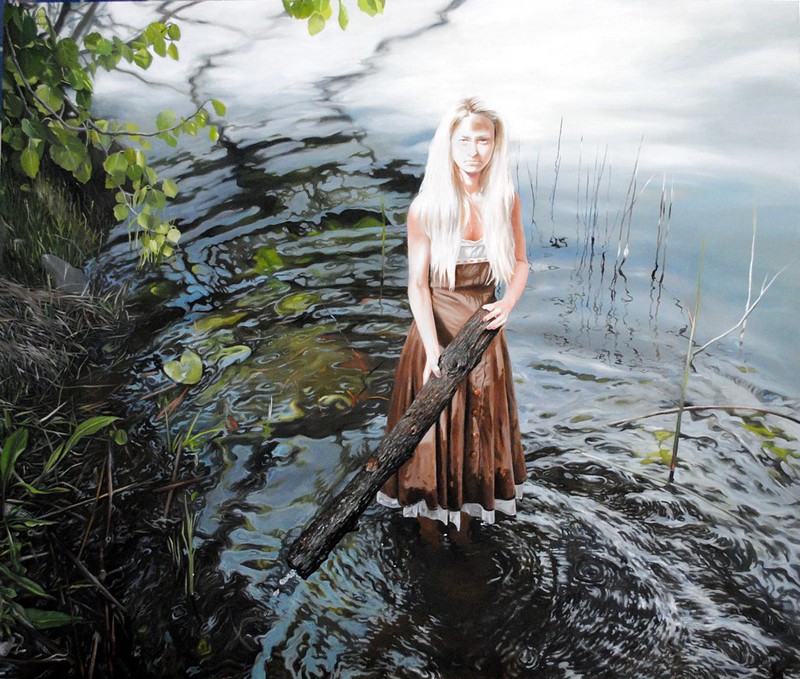
Linnea Strid is based in Stockholm Sweden. Fascinated with the minutiae of details, the artist’s hyper realist style is well suited to her intimate subject matter. Capturing the figurative with a very heightened sensibility, Strid emphasizes the details and textures that make her work uncannily amplified. The artist’s work is very much about personal inflection, and the solitude of the artistic process. Confined with one’s own observations and meditations as an artist, the human plight takes on an overwhelming cast. This visceral quality saturates Strid’s paintings.
The work conveys a sense of isolation and anxiety, beautiful in its human quality, and powerful in its honesty. Water is a recurring theme in Strid’s work, fittingly suggesting the impermanence of the human condition, and the overwhelming power of fleeting time. These themes preoccupy the artist’s work, as she delves into self-reflexive and often very exposed, studies of human emotion. Something very disconsolate coexists with the redemptive possibility of observation and beauty in these paintings. They convey affect through a hyper-realist lens, contributing to their overall sense of discomfort. The imagery is intense, and often beautifully dark and meditative, conveying the introspective and the unreconciled subjects of her practice. Rapt with the detailed execution that goes in to creating hyper-real effects of shadow, reflection, and light, Strid’s work is literally about the optics and dimensions of the recess, both psychologically and literally, and the inflections of its shadows. Her subjects, often intimate self-portraits, are frequently submerged beneath water, or depicted in moments of extreme vulnerability. The compositions are at times close detail views, with a proximity that is both uncomfortable and revelatory as though the viewer is an unwitting voyeur. Linnea Strid conveys the isolation and solitude of the artist’s speculative lot - a difficult combination of beauty and discomfort.

Stephanie Buer, now based in Portland, had spent over a decade observing the urban landscape in Detroit Michigan. This time spent exploring and seeking out the viscera of the urbanscape had a powerful and lasting effect on the artist’s work. Drawn to desolate spaces and abandoned structures, Buer captures the haunting histories of urban absentia. Fascinated by the traces of human intervention and the suggestion of time past evidenced in decay, the artist observed each structure take on a physical life of its own. Buer finds beauty in the blight of entropy and desertion. Her work is as much about the occupation and seeking out of these spaces as it is about their chronicling and capture. This paradigm of the artist as itinerant explorer in search of significant solitudes is an established tradition, but re-contextualized through Buer’s work it invokes a contemporary immediacy and a representational truthfulness. Raw, and unfeigned, Buer portrays forgotten recesses with a meaningful, if not melancholic, ruminative bent.
Buer taps in to the endless poetic possibilities of thoughtful silence, particularly in the context of the urban landscape where it becomes an uncanny offset to the fray. Her works convey an overwhelming sense of pathos in this unsettling silence. It is as though the structures and spaces the artist represents are human subjects - invaded with histories of change and loss, captured with a staggering amount of sensitivity and detail. The compelling inscrutability of the works resides in their incomplete disclosures. One can guess at the histories that might have taken place in these spaces, or to them, but they remain spectral and partial - obstinately silent. The artist is interested in this invasion and passing of time, and in the momentums of change and decay, but ultimately Buer is interested in the resilience of nature and the abandoned space, and the way in which they can tolerate the violation of time.

